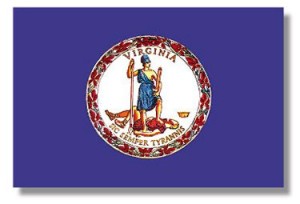
This week’s issue of Virginia Lawyers Weekly covers the top jury verdicts in Virginia during 2017. Of particular interest to me is the number one entry — a $3.8 million jury verdict in Heard Construction, Inc. v. Waterfront Marine Construction, Inc. et al. from the Circuit Court for the City of Chesapeake.
Both parties were government contractors who bid on project to replace a boat ramp on Pier 34 of the Little Creek Naval Base in Virginia’s beautiful tidewater region.
Like most other government contracts, sealed bids were required, and the lowest offer would win. Defendant was the low bidder, but plaintiff was classified as a HUBZone business entitled to a 10 percent pricing preference under 48 CFR 19.1307.
But here is the rub. The 10 percent pricing preference was available if — and only if — defendant was classified as a “large” business under the applicable size standard at the time of the bid.
Defendant misrepresented its size as “small,” and therefore the 10 percent preference did not apply and defendant was awarded the bid. Plaintiff then discovered that defendant was actually a “large” business at the time of the bid, and submitted a bid protest.
In considering the protest, the local Small Business Administration office requested information from defendant to verify its size status, and defendant responded with information that led the SBA office to determine that defendant was “small,” as it claimed.
Apparently, that information was false, because a request for reconsideration before the SBA resulted in a different outcome.
Plaintiff filed suit in the Chesapeake Circuit Court, alleging tortious interference against Waterfront Marine, along with the former principals of defendant and defendants’ parent companies. After a four-day jury trial, the jurors found defendants liable and awarded damages in the amount of $3.8 million.
To me, on the above facts, this case seems to be tailor-made to be a qui tam action under the federal False Claims Act and/or Virginia Fraud Against Taxpayers Act, and one wonders why a qui tam wasn’t brought. Had plaintiffs brought a qui tam action, they would have been entitled to treble damages, civil penalties, litigation costs, and attorney’s fees. Hence, we would be talking about a $11.4 million case and not a $3.8 million case.
I suppose it could be the case that plaintiffs simply came across the information slowly, over time, and thus the existence of the possible false claims act case only became apparent over time. It is also true that, had the plaintiff brought a qui tam instead of a plain-jane lawsuit, it would have only obtained, at most, 30% of the $11.4 million.
So there are reasons why, in this scenario, a plaintiff might elect his or her remedies in this way…still, I think a qui tam under the Virginia Fraud Against Taxpayers Act would have been a better route…but to a hammer, everything looks like a nail!